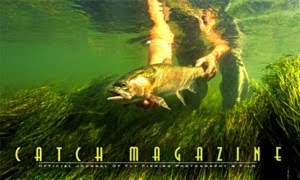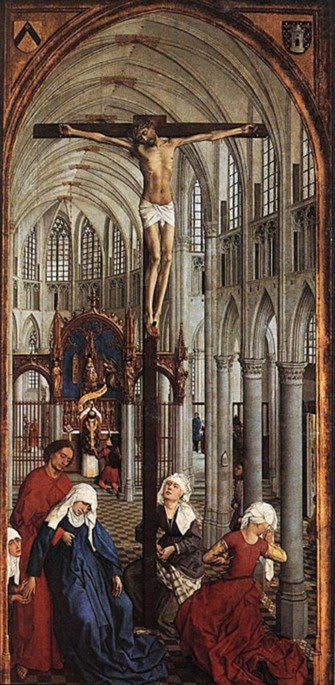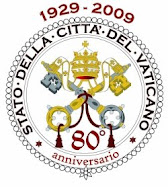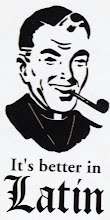
I am currently working on a paper involving liturgical law and the reforms which took place following the landmark Constitution Sacrosanctum Concilium of the Second Vatican Council. This involves an analysis of the various instructions that came from the Sacred Congregation of Divine Worship directing the implementation of the precepts set forth by the Constitution. I came across a great quote from one of these later instructions, Liturgicae instaurationes, of 5 September 1970.
Regular visitors to this blog will know that I have an affinity for the "Extraordinary Form" of the Roman Rite, and that I have been celebrating it for many years now. It has always been my observation that this form of the Mass has had a particular attraction amongst younger people of my generation. This has always come as a bit of a surprise to those not in favor of this form of the Mass, who often characterize this attraction on our parts as a misplaced longing for the past, a fruit of a kind of liturgical scrupulosity, or worse. I don't believe that this is truly the case for most, however. It seems to me (speaking personally) that the attraction of younger people to the "Extraordinary Form" is based primarily on two things. First is that participation in that form of the Mass recalls so poignantly that what one is engaging in in the Church's liturgy transcends the boundaries of one's limited community of the faithful (granted that the conditions of the local community do have a part in the liturgy, especially in the content of the homily, the choice of various legitimate styles of music and vesture, and various other elements of the Mass). This longing for membership in a larger community - an identification with the Church universal - is particularly strong for us. Secondly, this form of the Mass emphasizes the nature of the liturgy as both a spiritual and physical directing of the community towards God. I would argue that this is due largely to the common orientation of the priest and congregation ad orientem, and thus strictly speaking is not unique to the "Extraordinary Form."
As I read these various documents of the liturgical reform, I can't help but identify these liturgical principles present in them. It also seems to me, a person born well after the council (i.e. 1975) and after this initial period of liturgical renovation, that there is a bit of objectivity that one can bring to bear on the liturgical reforms that ensued. It seems that as the reform progressed, there was a greater drawing-back and reigning-in of the liturgical experimentations that were occurring. At least one gets the sense of that from the tone of the various instructions as they were issued one after another. I keep reading these documents and keep thinking that in some ways the liturgical experimentations can be likened to a gorilla who was let out of its cage, and these instructions were attempts to coax him back in. Perhaps we're still trying to accomplish that. Anyway, I post one of the more interesting quotes from the document here. I think that Sacrosanctum Concilium and all of these instructions should be mandatory reading for all those involved in the Church's liturgy today:

The effectiveness of liturgy does not lie in experimenting with rites and altering them over and over, nor in a continuous reductionism, but solely in entering more deeply into the Word of God and the mystery being celebrated. It is the presence of these two that authenticates the Church's rites, not what some priest decides, indulging his own preferences.
Keep in mind, then, that the private recasting of ritual introduced by an individual priest insults the dignity of the believer and lays the way open to individual and idiosyncratic forms in celebrations that are in fact the property of the whole Church.
The ministry of the priest is the ministry of the universal Church: its exercise is impossible without the obedience, hierarchic communion, and the will to serve God and neighbor. The hierarchic character and sacramental power of the liturgy as well as the respectful service owed to the believing community demand that the priest fulfill his role in worship as the "faithful servant and steward of the mysteries of God," without imposing any rite not decreed and sanctioned by the liturgical books
(Sacred Congregation for Divine Worship; Instruction Liturgicae instaurationes, 5 September 1970: AAS 62 [1970] 692-704. Art. 1)

































2 comments:
Bravo Fr. Beach, great post. You said "Perhaps we're still trying to accomplish that". Absolutely. Part of this Reform of the reform movement that we are in now is implementing what the Council Fathers truly had in mind and intended for the liturgical life of the Church. But this has had to happen alongside much needed repair of the damage done by the "spirit of Vatican II" which has slowed things. It can be argued that S.C. has really yet to be implemented.
"the liturgical experimentations can be likened to a gorilla who was let out of its cage, and these instructions were attempts to coax him back in. Perhaps we're still trying to accomplish that."
For one who lived through the revolution (and bears the scars to prove it)your gorilla metaphor is an apt one. As you can see, almost from the very start attempts have been made repeatedly from Rome to undo the damage. Unfortunately, from my own standpoint it seems that too many of those charged with re-caging the gorilla actually seem quite content to have him running amok. Others simply lack the intestinal fortitude to do the right thing. And after all, it's much easier to delegate the job to your parish's "Director of Worship" who, far more often than not, is an avid proponent of free ranging gorillas.
Has S.C. really been implemented? Clearly not, since two of its most neglected provisions call for retention of Latin as the language of the Roman rite and the making sure that the faithful can say and sing in Latin (Gregorian chant) the parts of the Mass pertaining to them. (How's that coming along?)
I do think that one of the reasons things fell apart as quickly and completely as they did circa 1965-69 was the prior failure to implement instructions such as Pius XII's 1958 De Musica Sacra (a follow up to Mediator Dei). If you read especially paras. 22-34 of De Musica you find a call for an amount of lay participation in the rite which is far different than anything I recall in the typical pre-V2 liturgy as experienced in the ordinary parish. In particular, the description of the people's participation in Low Mass (para. 31)--- making the responses, reciting the Gloria, Credo, Sanctus, Agnus Dei and Pater Noster "aloud" with the priest --- is not something I recall being implemented. Nor do I see it at any of the EF Masses I occasionally manage to sneak off to these days. I'd like to think that had De Musica Sacra/Mediator Dei been actually implemented at the parish level,the gorilla might never have been let out.
Post a Comment